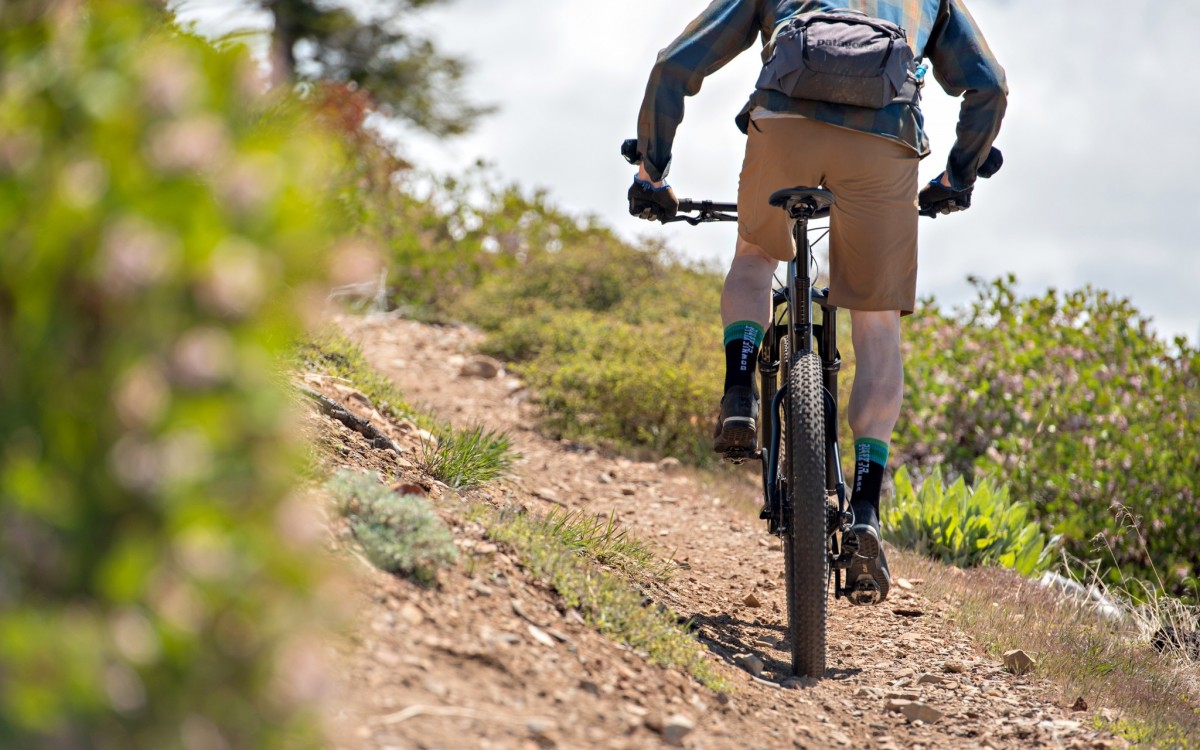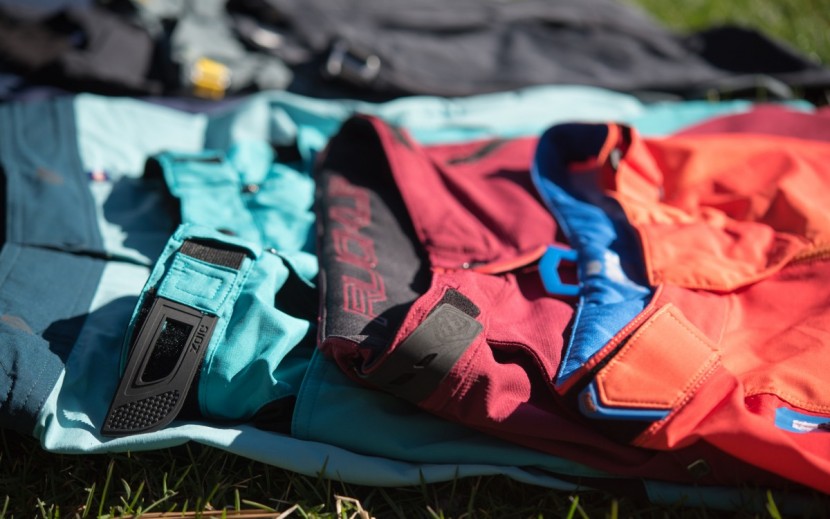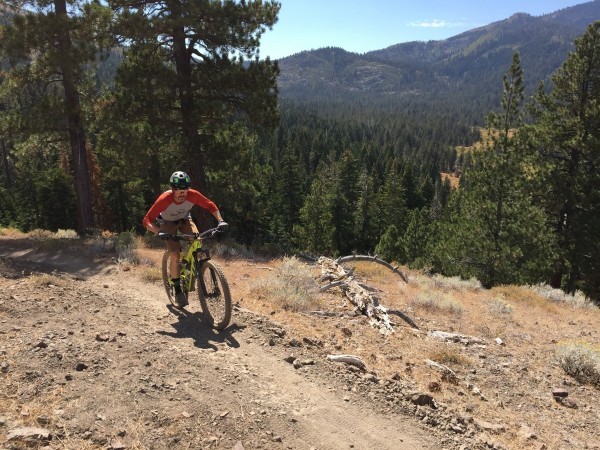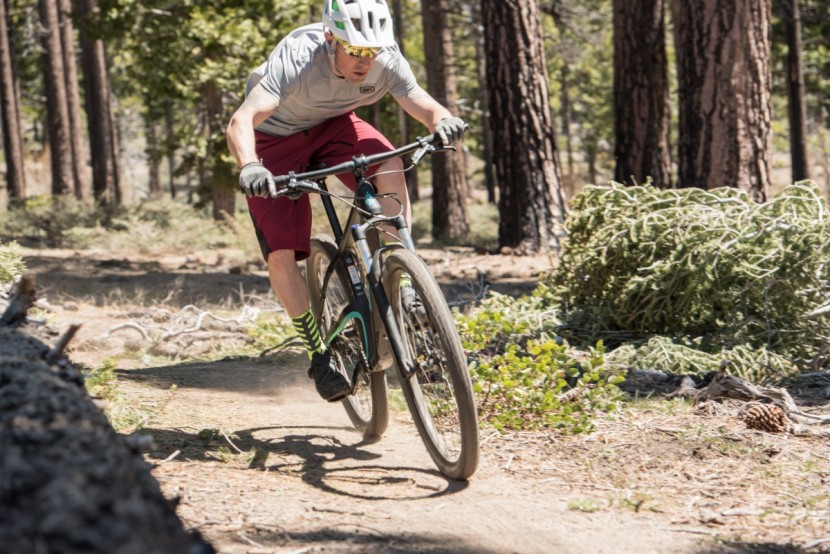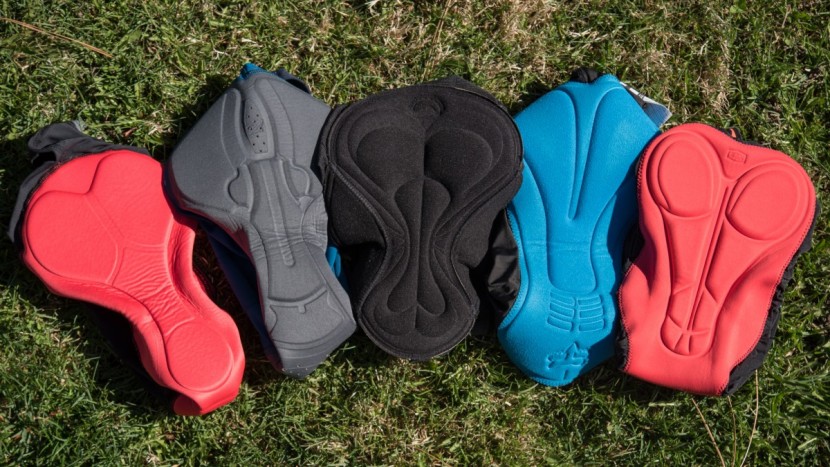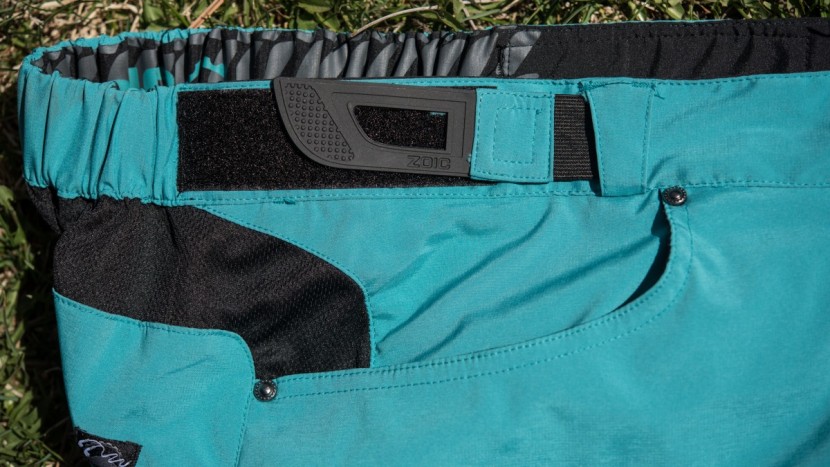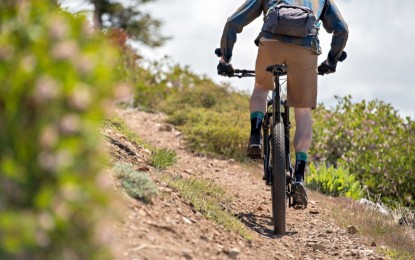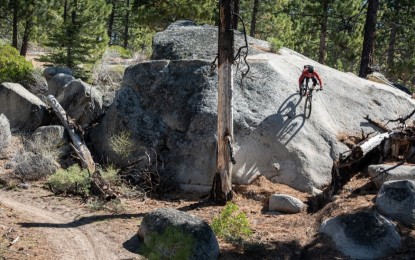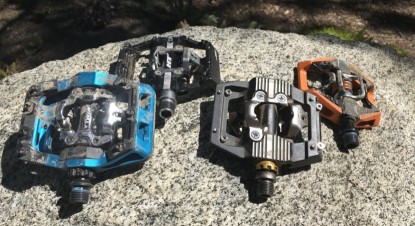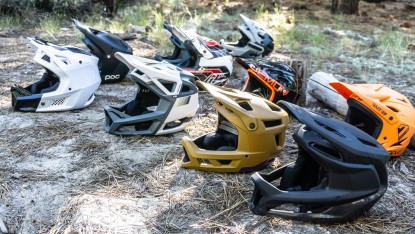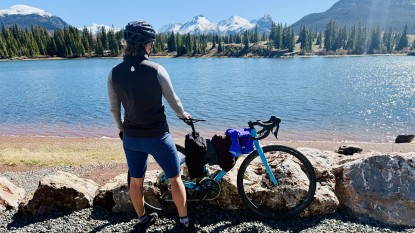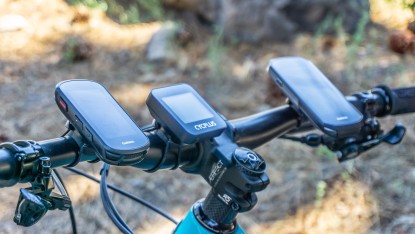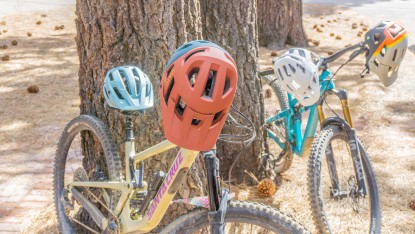How does one pick the best pair of mountain bike shorts? We tested dozens of shorts from the top brands in our mountain bike shorts review and discovered some important things you should consider before you buy baggy shorts for mountain biking. Read on for the details of how to narrow the search.
First, consider what makes a mountain bike short as opposed to a road bike short or an athletic short in general. For this review, we define mountain bike shorts as non-form-fitting baggy shorts that provide some protection and more features than tight lycra-style road bike shorts. On the other hand, unlike general-purpose sports shorts, mountain bike shorts must accommodate a chamois in the form of a liner worn underneath the shorts and have pockets to carry a phone and some food in a comfortable position while peddling. Given these needs, we will present the decision tree for selecting riding shorts, starting with the riding style and finishing by considering features, fit, and pricing.
Style of Riding
When shopping for a new pair of mountain bike shorts, first consider what type of riding you will be doing most often. “Mountain biking” is a broad term that covers everything from peddling gravel roads and shuttling descents in full body armor. Generally speaking, riders decide on their preferred terrain when they purchase their bike. However, here is a quick breakdown and some ideas of how the types of shorts we tested mesh with the various riding styles.
Cross-Country
Cross-country riding is typically done on smoother trails and involves a lot of pedaling in the saddle. Bikes designed for this type of riding usually have four inches or less of travel in the front and rear. The 29-inch wheel size is common to cross-country-oriented bikes, as are hardtails. Cross-country riders want lighter, less restrictive shorts that maximize pedal efficiency and ventilation. Protection and durability are not too important for this type of riding as wrecks are less common and generally less consequential.
Enduro
Enduro riding favors bikes with longer travel suspension and aggressive frame geometry capable of climbing efficiently. These bikes have full suspension, five to six inches of travel, and beefier tires to handle technical trails with jumps, drops, and rock gardens. Riders favoring this style should look for shorts that balance protection with pedal-ability. Longer inseams and wider leg openings accommodate knee protection, while stretchy, mid-weight fabrics keep riders comfortable in the saddle, cranking out the climbs while offering some abrasion resistance.
Downhill
Downhill (DH) riding is all about the down and is best done on a slack, 8-inch travel bike with a dual crown fork. Full-face helmets, goggles, neck braces, elbow and knee pads are common attire. Shorts for downhill riding should be long and have large enough leg openings to fit over the tops of kneepads. Rugged durability is prized over peddling comfort for this riding style since the challenging terrain is more likely to produce spills, and DHers rarely peddling in the saddle. As such, many DH riders forgo liner short when gravity riding.
Other Considerations
Chamois
A chamois is a piece of padding placed where the booty (and vicinity) contacts the saddle. Bicycling chamois were once made from smooth leather but are now made from modern synthetic materials. The chamois pad one's undercarriage and helps to prevent chafing. Except for downhill products, a chamois is what makes a bike short a bike short.
Many shorts can be bought sans chamois as it is an added expense that may not be necessary. Liner shorts can be purchased separately. It is recommended that this be considered as the chamois included with mountain bike shorts are often lower quality – but not always.
Well-articulated, conforming chamois that match the body's curves in a seated position are the first things to look for when shopping. We also prefer chamois with dense padding, multiple thickness zones, and a smooth, seam-free cover made with a wicking material. The chamois must be positioned correctly by the short to be between the rider and the saddle when in the seated position. Adding a lubricating agent such as Chamois Butt'r to the system is highly recommended, particularly on longer rides.
Features
Mountain bike shorts are available with a variety convenience features. Most of the feature carry across the various biking style, but not all. We recommend buying a short with features you will use and nothing more because unused bells and whistles are likely to get in the way and increase the cost of a short.
For cross-country and enduro riders who often wear a hydration pack, shorts with pockets may not be necessary. Increasingly, cyclists in all disciplines ride without a pack for better weight distribution and a more enjoyable ride. If you want to forgo the pack, you will want shorts with at least a few zippered pockets to secure a bike tool, phone, and food. Regardless of what type of riding you are doing, we recommend pockets that securely close with a zipper rather than Velcro or nothing at all, least you be tempted to use it on a bumpy ride.
All the shorts we tested had some means of adjusting the waist, which is critical to fine-tuning the fit. This is important in ensuring the shorts stay high on the hip and the crotch snugly fit to prevent bunching or pulling when in the saddle. The most common, and our preferred method, of waist adjustment is by Velcro tabs or a hook and loop system on the outside of the waistband. If those tabs are placed on the inside of the waist, then you can't adjust them on the fly. Built-in belts and straps are okay but nowhere as comfortable and secure as Velcro tabs.
Sizing
Sizing really matters with bike shorts. A short can be amazing in every other way, but it doesn't matter if the legs are too tight or the waist too loose. We tested all of the shorts in a size medium or 32" inseam, depending on how the manufacturer labeled them. All of the shorts we tested fit most riders with up to a 34" waist and down to a 30" waist due to the waist adjustment mechanism. Height proved to be the biggest factor in fit as tall rides with slim waists ran into issues with leg length and leg opening on several models.
Price
You get what you pay for, right? There is some truth to this statement, but bargains exist that defy this truism. When they present themselves, we often mark them as such in our review.
If you need other shorts, we've tested those too! Check out the list of our favorite shorts for men and women doing various activities.
Conclusion
We hope our research and testing help you choose the best pair of shorts for your riding style and needs. While there's a plethora of shorts on the market, following our guidelines on riding style, features, and fit will cut through the noise. While riding in crummy shorts is way better than sitting on the couch in awesome shorts, having the right shorts will greatly improve the trail experience.

